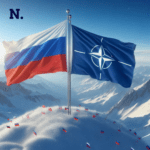According to Taiwan News, the Ministry of National Defense in Taiwan made an announcement. They stated that 15 Chinese military planes were spotted on Saturday and Sunday. Additionally, six navy ships were cruising around the island. This activity is part of an ongoing series of provocations by China, reflecting heightened tensions in the region.
Details of the Chinese Military Activity
Of the 15 detected aircraft from the PLA, eight crossed the Taiwan Strait median line. These aircraft entered the northern and southwestern sections of Taiwan’s air defense identification zone (ADIZ). Taiwan sent its own planes and naval vessels in response to these intrusions. It also set up missile systems positioned on the shore. These measures were taken to monitor the PLA’s activities.
On June 22, Taiwan’s defense ministry tracked a more significant incursion. There were 41 Chinese military aircraft around the island. Additionally, seven navy ships were detected. According to the ministry, 32 of these aircraft crossed the Taiwan Strait median line. They entered the northern, southwestern, and eastern parts of the ADIZ. These frequent military activities have kept Taiwan’s defense forces on high alert.
Rising Chinese Military Operations
In June alone, Taiwan has tracked Chinese military aircraft 301 times and naval or coast guard vessels 183 times. Since September 2020, China has been increasingly employing gray zone tactics, incrementally escalating the number of military aircraft and naval ships operating around Taiwan. These tactics aim to achieve strategic objectives without engaging in direct and sizable use of force.
Gray zone tactics involve efforts beyond steady-state deterrence that aim to achieve security objectives without significant force. China’s consistent use of these tactics around Taiwan has been a cause for concern, as they place constant pressure on Taiwan’s military and test its response capabilities.
Context of the Military Escalations
China’s increased military activities around Taiwan include regular air and naval incursions into the ADIZ. China sees these actions as part of its broader strategy to assert its sovereignty over Taiwan, which it considers part of its territory. Beijing insists on eventual reunification with Taiwan, stating that it would use force if necessary.
Defensive Measures against Chinese Military
In response to the increased military activity, Taiwan has bolstered its defenses, including enhancing surveillance and deploying more sophisticated missile systems. The country’s military has been consistently monitoring the PLA’s movements and conducting its own exercises to maintain readiness. Taiwan’s defense ministry continues to track and report on these incursions, highlighting the ongoing tension and the need for robust defensive capabilities.
Historical and Political Background
In China’s foreign policy, Taiwan has long been a divisive topic. The island operates as a separate, democratic government, but Beijing has never renounced the use of force to bring it under Chinese control. China’s increased military activity is part of its broader strategy to pressure Taiwan and signal its determination to assert control over the island.
International Response and Implications
The situation in the Taiwan Strait has been constantly monitored by the world community. The United States and other Western nations have expressed concern over China’s aggressive actions and have reiterated their support for Taiwan. The ongoing tensions have implications for regional stability and international relations, particularly in the context of US-China relations.
The US, in particular, has been vocal in its support for Taiwan, conducting its own naval operations in the region and strengthening defense ties with Taipei. These actions are part of a broader strategy to counter China’s influence and support democratic governance in Taiwan.
Conclusion
The detection of 15 Chinese military aircraft and six naval vessels around Taiwan is part of a pattern of increased military activity by China in the region. Taiwan’s Ministry of National Defense continues to monitor these activities closely and respond accordingly. The use of gray zone tactics by China highlights the ongoing tensions and the strategic maneuvering in the Taiwan Strait.
The international community remains vigilant, with concerns about the implications for regional stability and international relations. As China continues to assert its claims over Taiwan, the island’s defense measures are critical. International support is also crucial in maintaining Taiwan’s autonomy. These efforts are essential for ensuring regional peace. The circumstances highlight the importance of using diplomacy to solve the underlying problems. Diplomatic solutions are needed to stop the situation from getting worse.





